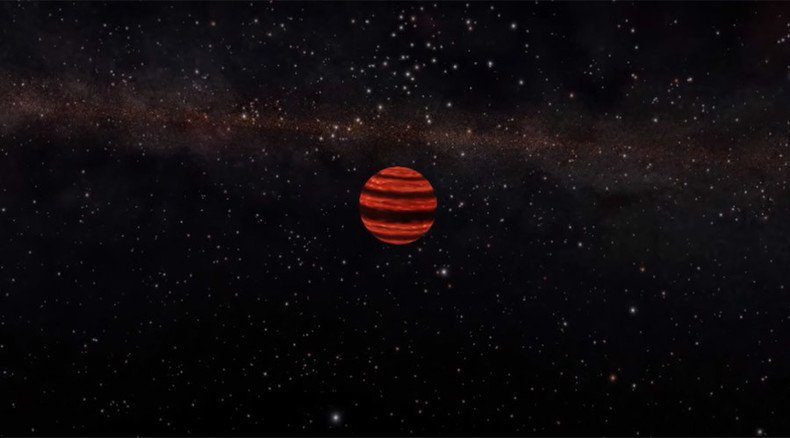'Young Jupiter’ discovered, could reveal clues about our solar system

Astronomers have discovered a planet in a younger star system 100 light years away that resembles Jupiter in its early development, a new study shows. At twice the size of Jupiter, it can be photographed from Earth by telescope.
The newly found exoplanet, called 51 Eridani b, or “Young Jupiter,” was discovered by astronomers at the Gemini South telescope complex in Chile.
Breaking News: New Instrument Images a Young Cousin of Jupiter | SETI Institute http://t.co/6uUfhL2pNTpic.twitter.com/zx5BMqoiKu
— The SETI Institute (@SETIInstitute) August 13, 2015It orbits a star in a planetary system much like Earth’s. Scientists say the discovery is important as it could reveal clues about how our solar system was formed.
“51 Eri is one of the best stars for imaging young planets,” study co-author Eric Nielsen at Stanford and the SETI Institute told Space.com.
READ MORE: Beware, our universe is dying, says large-scale astronomy study
The research was published in the August issue of the journal Science.
“It’s one of the very youngest stars this close to the sun. The birth of 51 Eri took place some 20 million years ago, 40 million years after the dinosaurs died out.”
Astronomers said ‘Young Jupiter’ is a gas giant twice the mass of Jupiter and over 600 times the size of Earth. It has distinct bands of methane gas, also much like Jupiter. Despite being a gas planet at 800 degrees Fahrenheit, it is much cooler than other exoplanets of the same age, which are as hot as 1,200 degrees Fahrenheit. At 800 degrees, though, it can still melt lead.
Researchers say the young planet’s rich methane atmosphere signifies that it is well on its way to becoming a giant planet.
The finding was made possible by advances in imaging that can capture atmospheric light from the planet itself.
“The Gemini Planet Imager…sees their glow, which we refer to as direct imaging,” said study’s lead author Bruce Macintosh, an astrophysicist at Stanford University in California, according to Agence France-Presse.
“[It] is far more sensitive than its predecessors. In fact, the 51 Eri system had been observed by four previous-generation instruments that all missed the planet completely.”
Exoplanet 51 Eridani b: A Red-Hot Young Jupiter Around Distant Star ... - http://t.co/ekOPyUABbF#space#newspic.twitter.com/3Fg8hMzQyC
— Space Leaks (@spaceleak) August 13, 2015Previously, scientists had to rely upon NASA’s Kepler Space Telescope, which could confirm new planets only by the shadow the world caused as it passed in front of the starlight (sun).
Researchers say they will begin observing 51 Eri in late September, when it emerges from behind the sun, and will begin mapping out its orbit.
“If it’s going in a nice circular orbit like Jupiter, that’d be really exciting," Macintosh said. “If it’s in a weird orbit, that’s really exciting, too.”












